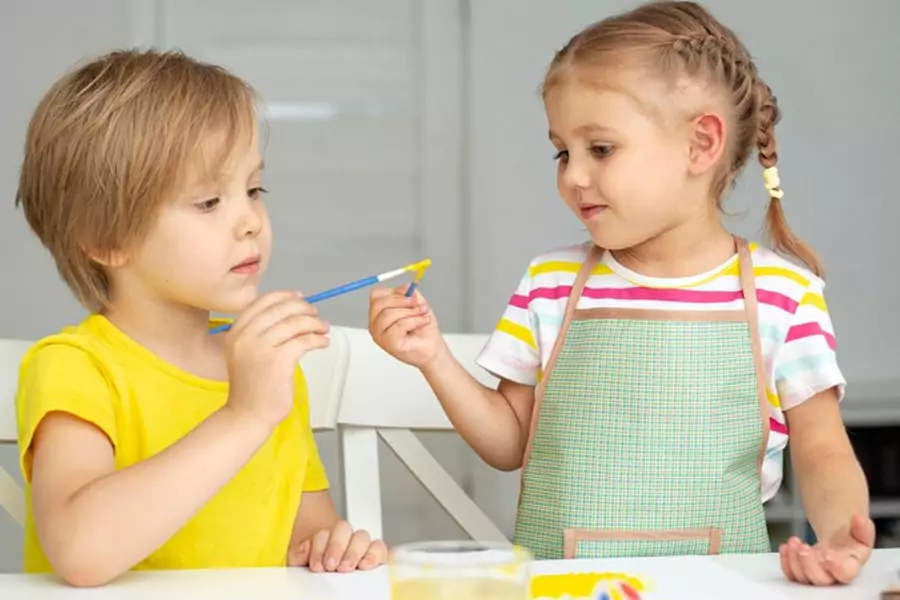
As parents, we want to make sure our kids get opportunities to learn, grow, play, and develop properly. For this, most of us strive to provide our kids with the best learning and education opportunities – be it extracurricular classes, online classes, camps, preschool, after-school, etc.
However, with so many avenues available, it becomes hard to differentiate them from each other. One of the most common questions we hear from parents at NurtureKids is: What is the difference between preschool and kindergarten? While both serve as essential stepping stones in early childhood education, they have distinct purposes and structures. Let’s break it down.
Preschool is an early childhood program designed for children aged 2 to 5 years before beginning compulsory education. According to Wikipedia (2021), preschool is defined as: “An early childhood program offered to children before they begin compulsory education.
Preschool aims to prepare little minds for what will come ahead and develop an attitude of wonder, social competence, and self-reliance. It is proven that during 2 to 5 years, the brain of a child absorbs the learning processes much better. So it becomes a crucial age to start developing foundational skills.
Preschools in the U.S. can be privately funded or supported by state education agencies, and they cater to children of various backgrounds, ensuring that every child has access to quality early education.
Kindergarten, therefore, is a more formal, step-by-step process in K-12 school systems, taken when the child is 5 years old. Kindergarten bridges the home or preschool for the child with elementary school by gradually introducing him to a systematic learning environment.
The term ‘kindergarten’ translates from the German language and means ‘children’s garden.’ This is all about a fusion of learning structured within play. While preschool more or less stresses socialization, kindergarten incorporates education skills like numerical and literacy coupled with cultural intelligence.
| Feature | Preschool (Ages 2-5) | Kindergarten (Age 5) |
|---|---|---|
| Purpose | 1. Early development, 2. Play-based learning | Introduction to formal education |
| Focus Areas | 1. Socialization, 2. Creativity, 3. Emotional Growth | 1. Academic foundation, 2. Self-awareness, 3. Structured learning |
| Curriculum Style | 1. Flexible, 2. child-driven, 3. Play-based | 1. Mix of play and academics, 2. Structured learning |
| Learning Methods | 1. Interaction, 2. Group play, 3. Storytelling, 4. Hands-on activities | 1. High/Scope Learning, 2. Guided lessons, 3. Critical thinking exercises |
| Class Size | Small, often 12:1 student-teacher ratio | Larger, follows standard school system ratios |
| Scheduling Options | Varies (few hours to full-day programs) | Full-day or half-day options available |
| Compulsory? | No (but recommended) | Yes (part of K-12 system in most states) |
The decision between preschool and kindergarten depends on your child’s age, developmental needs, and learning style. If your child is younger than 5, preschool provides a great opportunity to develop essential social and emotional skills. However, if they are ready for a more structured learning environment, kindergarten is the next logical step.
Both preschool and kindergarten have significant roles in a child’s future, and understanding the differences enables parents to make informed decisions on which option would work best. Early education sets the stage for a lifetime of learning and success, regardless of which path you take.
Which option are you considering for your child? Let us know in the comments below!



Copyright wenurturekids © 2025. All Rights Reserved
